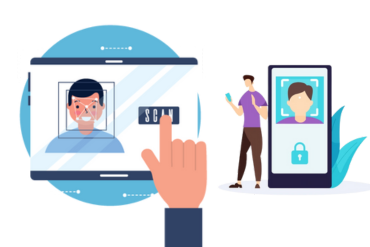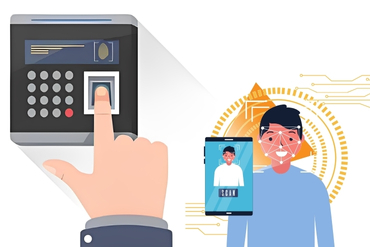Biometric Attendance System
In India, coaching institutes, schools, and other educational institutions still face issues regarding student identity verification. When it comes to numbers, coaching institutes face more challenges with attendance tracking than schools. Many schools have already implemented biometric attendance systems and streamlined their administrative operations, but coaching institutes are lagging, still relying on manual attendance tracking.
Given the high enrolment numbers in coaching institutes, implementing an efficient biometric attendance system is crucial for accurate attendance tracking, as well as for effective recording and reporting.
What does Biometrics mean?
The meaning of biometrics is, using people’s unique physical and behavioural traits for identification and security.
Common biometric methods include:
– Fingerprint biometric: Fingerprint biometrics uses the unique patterns in your fingerprints to identify you. Since everyone’s fingerprints are different, they are a reliable method for identity verification.
– Facial biometric: Face recognition uses the unique features of your face to identify you. By scanning and recognizing these features, it provides a reliable way to verify your identity.
– Iris biometric: Iris identity scanning uses the unique patterns in the coloured part of your eye to identify you. By scanning these patterns, it offers a reliable method for verifying your identity.
– Voice biometric: Voice biometric uses the unique characteristics of your voice, like pitch and tone, to identify you. By analysing these features, it provides a reliable way to verify your identity.
Biometric systems are used in many ways to make sure people are who they say they are. For example, they can unlock your phone using your fingerprint or face. They can also control access to secure places, like offices or restricted areas, and help verify identities at borders or in databases to keep track of who is who.


Benefits of Implementing Biometric Systems in Coaching Institutes
Registration
When a coaching institute records a student’s biometric data during admission, their identity is established for the long term. These biometric details can then be utilized for various purposes within the institute. For example, biometric verification can grant students access to different areas like classrooms, libraries, and study rooms without the need for repeated verification.
This one-time and real-time biometric registration simplifies the process and ensures accurate tracking of a student’s presence throughout their course.
Attendance Management
Attendance management is a critical aspect of any coaching institute. The biometric attendance system has streamlined this process by eliminating the need for manual tracking and paperwork. A biometric attendance system for coaching institutes can completely replace traditional roll calls and paper-based methods.
With biometric systems, such as fingerprint biometric or facial biometric, attendance is recorded automatically and in real-time. This system not only reduces administrative workload but also ensures accuracy in attendance records, which is crucial for both administrative purposes and student accountability.
Safety and Security
Ensuring the safety and security of students is a top priority for coaching institutes. Biometric systems provide a robust solution for controlling access to the premises, thereby preventing unauthorized entry.
By using a biometric attendance system, only registered students and staff can access the institute’s facilities, reducing the risk of security breaches. This added layer of protection helps in creating a safer environment for students and staff, ensuring that only verified individuals are on the premises.
Activity Tracking
Biometric attendance systems are also valuable for tracking student participation in both academic and extracurricular activities. These systems allow coaching institutes to monitor and report on student engagement in various events and activities. With biometric data, institutes can easily generate reports on student participation, which helps in evaluating performance and involvement. This real-time tracking is far more efficient than manual methods, making it easier to keep an accurate record of student activities.
Library Management
Coaching institutes often have libraries where students need access to educational resources. Biometric attendance systems can enhance library security and management by ensuring that only authorized students can access the library and check out materials.
Unlike traditional library cards, which can be lost, or misused, biometric authentication provides a more secure and reliable method of managing library access. This not only protects valuable resources but also ensures that students with proper biometric identification can benefit from the library’s offerings.
Conclusion
The integration of biometric attendance systems in coaching institutes offers a multitude of advantages. From streamlining attendance management and improving security to enhancing student experience and simplifying administrative tasks, biometric attendance systems prove to be a game-changer. As coaching institutes continue to evolve, adopting a real-time biometric attendance system ensures they remain at the forefront of technological advancements, fostering a more efficient and secure educational environment.
Also, check the related post – https://metaguard.in/biometric-systems-in-education/





